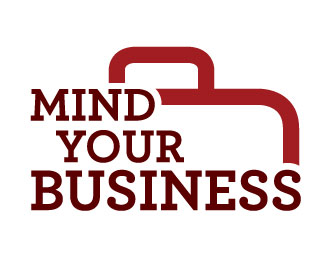Top 4 unexpected culture killers for post-COVID-19 hybrid work

Images from Shutterstock.
Barring another lockdown, most law firms will begin allowing attorneys and staff to return to their offices starting next month.
Though each firm’s exact approach to reentry will vary—and while there are many separate arguments to be made about the “right” balance of remote and in-office work—current industry trends and sentiments suggest that many firms will embrace hybrid work for the foreseeable future.
In a hybrid scenario, attorneys and staff will split their time between working remotely and working in the office. While individual schedules will vary based on job function and perhaps personal preference, the big picture is that on any given day, firms will have a segment of their team in the office, and another segment dispersed across their homes, client sites and other remote locations.
After more than a full year of working remotely, this will be yet another disruption for law firms to endure—one that, if not approached thoughtfully, can do serious damage to engagement and retention.

Culture: your firm’s next big hurdle
Many firms were, fortunately, able to maintain profitability through the pandemic.
As the dust settles and firms make long-term, high-impact decisions on how they’ll handle hybrid work, we near another inflection point: Will we start seeing the same record-high quit rates in the legal industry as we now see in the greater workforce?
Central to the issue of employee engagement and retention is firm culture. When quarantine sent us home, we saw our law firm clients working in overdrive to keep their teams connected and translate their firm culture digitally.
This was no easy feat, but it was just a warm-up. Though fully remote work was new to many of us, it did offer the advantage of leveling the playing field; we were all working from home, and we all interacted with our coworkers and the collective firm using the same tools and tactics.
In a hybrid work environment, on the other hand, you might have a smattering of permanent remote workers, a portion who come into the office a few times a month, a portion who come in a few times a week and maybe even a portion who come in every day.
This naturally creates a wide spectrum of experiences, which makes the prospect of maintaining a strong and consistent firm culture across all employees a much more complex challenge.
In fact, even seemingly routine internal interactions can actively contribute to members of your firm having an imbalanced, impersonal and inequitable experience of your firm—which heightens the risk of losing top talent to more savvy competitors. Let’s explore these below.
Four ways hybrid work undermines firm culture
During this particularly volatile “Great Resignation era,” these four subtle factors can quietly erode firm culture and fuel disengagement:
1. Internal video meetings
After living on Zoom and Teams for a year, we know how to hold virtual meetings with other members of the firm.
While a screen full of tiny boxes can grow tiresome, each person in those boxes takes up the same amount of space, has the same means to contribute and experiences that meeting in the same way.
Now, consider a video call on which half the participants are in the office and half are at home. Will the office group join from your conference room with remote folks projected onto a small screen? Can remote participants distinguish who is speaking when? Do they have the same access to any whiteboarding or visuals? How hard will it be for them to interject and be heard?
2. Spontaneous discussions
Outside of prescheduled meetings, a return to the office means a return to spontaneous chitchat that snowballs into breakthrough ideas. Do you have a good way to pull people into a conversation on the fly? Will remote participants have the same means to contribute as those who are physically together in the office? Is collaborative note-taking an option? If some people simply aren’t available, is there a place to share a full, interactive summary afterward? A policy for how and when to do this?
3. Team-building
Nine months into the pandemic, Pew Research found that most employees felt less connected to their coworkers, which indicates that those of us who have been used to building and maintaining our internal relationships in person have been struggling to do so virtually. Some, viewing remote work as temporary, likely didn’t try all that hard to begin with. If we continue to approach in-person team-building activities as our default with virtual participants “included” as exceptions to accommodate, we are not actually being inclusive—we are providing unequal opportunities to build crucial personal bonds.
4. Management and advancement
This is another one for leadership. Over the past 17 months, we’ve more or less settled into a routine of virtual delegation, collaboration, check-ins and so forth. But what happens when you see one associate in person three times a week, another twice a month and another never? Will those with the most face time have access to more opportunities simply because they’re more accessible? Will you develop an unconscious bias that the remote associates aren’t as invested because you don’t see them?
Best practices to maintain firm culture

Fortunately, we can head these challenges off with some thoughtful planning and a new technology tool or two.
- Be intentional with your meetings: Think through how to empower each meeting participant to contribute effectively. Opt for whichever format creates the most equivalent experiences, not what’s most convenient. There’s a logistical element, too—can you simplify meetings by having groups who regularly collaborate come into your office at the same time? (There’s an app for that.)
- Upgrade your conference room: Consider solutions that level the playing field for on-site and remote participants. Interactive whiteboards with app integration (such as the Vibe) and high-quality soundbar/camera combos with speaker tracking (such as this from Poly Studio) will help remote workers feel seen, heard and able to fully participate.
- Revisit your existing collaboration tools: If you rushed to implement Teams, SharePoint, Webex, Zoom or any other real-time communication and collaboration tool, take a deeper, more thoughtful look at these packages and all they have to offer in the way of features and integrations—because they offer quite a lot.
- Get your team trained: As you bring any new tool into play, make sure your team knows how it works and firm policy for when and how to use it. A mix of group training sessions (record these for new hires!), individual sessions for VIPs and how-to guides or infographics for reinforcement generally work well.
- Experiment and solicit feedback: No matter how many hypotheticals we anticipate, expect trial and error. The most critical element of success is to involve your team and listen. Your team’s perception is the only reality that matters here.
Where to start
First, make sure you have a clear vision of what your workplace will look like once your team can return safely. Who will work from where, and when?
From there, consider how the different people or groups in your firm will experience your culture given the routines in place and tools at their disposal today. Identify the spectrum at hand and where your culture has room to fall down.
We’ve been presented with a new opportunity to show our people that they are, in fact, our most valuable asset—and to build upon the forward momentum that many were able to achieve despite all the challenges the pandemic threw our way.
I hope you’ll seize it.
Heinan Landa is the founder and CEO of Optimal Networks Inc., a globally ranked IT services firm, the creator of Law Firm Anywhere, a virtual desktop solution that helps attorneys work seamlessly and securely from anywhere, and author of The Modern Law Firm: How to Thrive in an Era of Rapid Technological Change. After earning his BS and MS in electrical engineering and computer science from Johns Hopkins University, Heinan went on to receive his MBA from the Wharton School of Business. Featured in Legal Management, Legal Times, Chief Executive, Inc. Magazine, Forbes, CIO, and with regular appearances on ABC7, CBS9 and FOX5 TV, Heinan is a trusted leader in the legal, technology and business spaces. For more information, visit OptimalNetworks.com, call 240-499-7900, or email [email protected].
Mind Your Business is a series of columns written by lawyers, legal professionals and others within the legal industry. The purpose of these columns is to offer practical guidance for attorneys on how to run their practices, provide information about the latest trends in legal technology and how it can help lawyers work more efficiently, and strategies for building a thriving business.
Interested in contributing a column? Send a query to [email protected].



